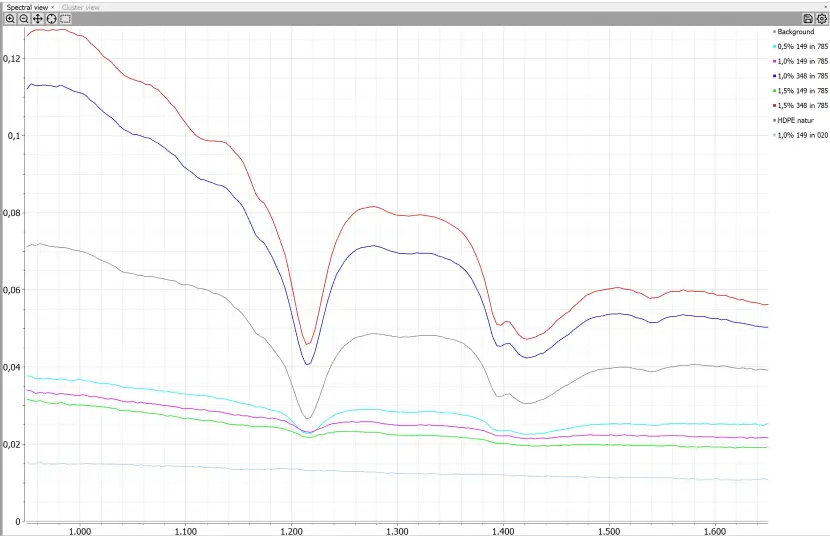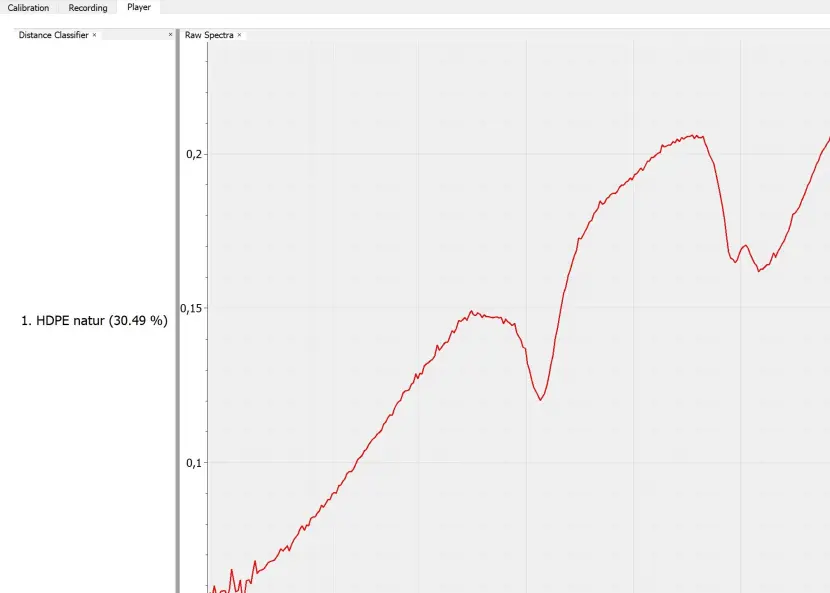Software suite for compact NIR spectrometers
Software suite for compact NIR spectrometers
Whether it is the identification of unknown substances, the analysis of large amounts of data or simply the generation and storage of NIR spectra in open data format: the different software modules of our software suite cover the most diverse use cases.
What is most striking, however, is the consistent reduction of functions. By concentrating on the essentials, even non-experts can quickly get started. The different display formats (raw spectra & cluster display) allow the user to quickly understand how the software works and the relationships in the data. The open data format allows easy and comprehensible handling of the data and free editing: Perfect for getting started in near-infrared spectroscopy!
Overview available modules
- Recorder – The basic module. For creating, visualising and saving individual spectra.
- Player – The prerequisite for everything else, no matter whether it is our standard application for analysing data or ready-developed applications. The player plays all applications and processes the data as required.
We offer standard applications for- the analysis of data,
- the identification of plastics and
- quantitative assessment of NIR detectability.
In addition, we can develop any complex, individual applications for you.
- Data Manager – With this, you analyse your data, among other things with machine learning methods, and learn new data, if the application supports this.
Recorder
The software module displays the processed measurement data as a raw spectrum. The wavelength range is from 900 nm to 1,700 nm.
Visualisation
The data generated by the scanner are neither filtered nor smoothed, i.e. they receive the raw data. The basic module is part of the scope of delivery of the Solid Scanner.
Appropriately trained staff can start their own interpretation of the measured spectrum within a second. Qualitative evaluation of the spectrum is thus possible. Distinguishing “good” from “bad” NIR spectra succeeds immediately. Employees without expert knowledge can quickly and reliably determine plastics with the help of the optionally available applications.
Technical specification
- Multilingual (German and English)
- Operating system from Windows 7 and Mac. Linux on request
- Data import and export via JCAMP (.jdx, .dx; Joint Committee on Atomic and Molecular Physical Data)
Player
The player is a powerful tool. It plays all the applications we make available. We can use an extensive toolbox for development.
Our standard applications:
- Standard analysis
- Plastic identification
- NIR detectability
Our individual applications:
Here we respond individually to your task, regardless of whether it is a modification of a standard application or a completely new application developed exactly for your situation: Talk to us!
… we look forward to supporting you with our expertise.
Data Manager
Standard analysis: Here 3 groups can be clearly distinguished: Blue/Turquoise, Red & Green. The measurements in yellow show too high a scatter and cannot be meaningfully taught as a group in this application.
The Data Manager helps you to analyse new data and to change the data of the applications, if available. Concrete examples:
- Standard analysis: With the Data Manager, you group spectra and then display the average spectra of these groups. In the cluster view, you use a principal component analysis to search for correlations in large amounts of data. You recognise homogeneous as well as inhomogeneous materials and can teach in matching spectra as individual groups. This allows you to create your own application, e.g. for incoming goods.
- Plastic identification: This application already contains some plastics. If you want to change the composition of the database, you can analyse existing and new data similar to the standard analysis and update your database accordingly. Furthermore, it is recommended to subscribe to this application update service in order to always be up to date.
- NIR detectability: This application contains PP and PE plastics as references. For your own references, exchange the existing ones with your measurements and then update the application.




